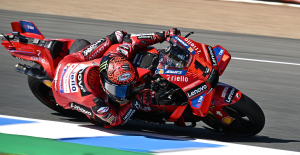He is considered to be most expensive Film of the German film history: "Jim button and Luke the engine driver" after the children's book by Michael at the end of 1960. In the spring he came out in the cinemas, and in the run-up to the producer voice search with a difficult Financier. "Why is the Boy black?", had asked potential Chinese investors confused. Even in Hollywood, you have proposed: "Could Jim not know?"
The Boy with the black skin as an active Hero was in the German-language children's book of the sixties, the absolute exception. And even though the "Jim Knopf" was written in the characters of humanism and a character in it even a real fire to deliver a speech against racism, feel clichéd, some of the black parents of Franz Josef Tripp's illustrations as such, and, Yes, racist, that the book from some American school disappeared from libraries. How do children look books today?
The school classes are also in Germany and Switzerland are much more heterogeneous than in the sixties. According to Figures from the year 2017, the share of foreign-language children in the nursery schools of the Canton of Basel-city, 49 per cent, of the children of Swiss nationality, 59 percent. In primary school, 51 per cent of the children were in a foreign language, 62 percent were Swiss. In the city of Zurich in 2017, around 74 per cent of the Swiss children were not registered gärtler, 41 percent had a first language of English. In the Zurich primary school, Swiss children accounted for about 75 percent in the city and the Canton; 59 per cent had English as a first language. In the nursery schools as primary schools in the Canton of Bern, the proportion of Swiss children remained in the school year 2016/17 between 81 and 82 percent. In some places, approximately every third child has a Background that spoke of him, alone, high adaptation services required.
The Trailer for "Jim button". Video: Warner Bros. DE/Youtube
mirrored this reality of life in the current children's books? And they address the phenomenon of foreign origin, without the children with a migration background as a needy victim? Thus, the research is focused; and a new British study, entitled "Reflecting Realities" has determined, at least for the UK, arge deficits.
There sat in the classrooms of the public primary schools in 2017, rooms, around a quarter of colored children, and 8 per cent foreign White. In the same year, over 9,000 children's books that have appeared. Only 1 percent of introduced a black character, or a child of an ethnic minority as a hero or heroine at the centre. Even as a minor character, they were represented only 4 per cent. Such characters were at all, was touted in the book, often explicitly as a problem-oriented, so under the heading of "Social justice". Only one of these books can be understood as a Comedy.
the children's book in Switzerland in a similar precarious situation? And the children's book plays a major role for the formation of a stable self-image, as it suggests the excitement of politically-correct children's book? We asked Elisabeth Eggenberger, editor-in-chief of the magazine "book&mouse" by the Swiss Institute for child and youth media (SIKJM).
woman Eggenberger, how influential are children's book characters for young readers?
This is difficult to measure. In principle, however, children deal constantly with the formation of identity, and not only books have a big influence – but also. How much knowledge of the world of small children from picture books. For example, if a child nominates a hidden object book of animals, never seen it in reality. So enormous is the role of children's books in the development process. There are studies that girls in kindergarten age, have books with non-traditional Role models read aloud, dared then in role-playing games is the more traditional roles. In all cases, children stories, learn to empathise, in other figures, the feelings of feeling: The also supports the growing together of heterogeneous Kindergarten and school classes.
Where is the children's book is compared to other media?
still books from toddler age to take to the primary school a leading role. In contrast to TV and Apps, you allow for dialogue, intimate situations between adult and child which are very helpful for the development of language, Relationship skills, and empathy. School-age books are – not all children are the same – still often consumed, just think of all the Fans of serial literature. Reading moments are an important factor in the Emergence of their own fantasies.
there Are really only a few children's books with heroes that are not white? How is it otherwise with diversity?
This is true for the British as the German-speaking book market: children from other cultures or with a migration background are less often present. In contrast, it is striking that the strong girl characters have caught up. It is more difficult with diverse young characters. Also LGBTI issues, there is, of course, primarily in the youth literature; far less often in pictures and children's books. But it is Coming. The German-speaking market is differentiated, with almost 9000 new releases, high.
Elisabeth Eggenberger, an expert on children's literature. Photo: PD
How is it with the Swiss publishers?
With Baobab, Switzerland has a small publishing house, has written to the representation of other cultures in the children's and youth literature, on the Flag, since children's books are usually published from Asia, Latin America, and Africa. However, the are only about four books per year. Very helpful, the Baobab brochure "Hummingbird", which recommends new children's books from all publishers, which correspond to the Baobab criteria in relation to value diversity, dialogue, respect and equality. And the young publisher Dabux, wants to reach out to the reading-achieving young people, keeps the authors – all from Switzerland – to describe the local environment of the young people. As represented in the books, there are also Teens with a migration background. Of course, the other publishers may have a book to such questions in the program. But most of the books have a white protagonist – or even no human figures.
Also in the case of Swiss authors?
This put a special emphasis on the representation of children with a migrant background, it seems to me. Ever since the first wave of Migration in the 1960s, so in Eveline Haslers, "Come again, Pepino!". Often other migrant groups are represented as in German books. There are often Turkish, Russian, and newly-Syrian children, in this country, today, Albanian, Portuguese.
What is your typical role?
Often, a Problem is still in the center: escape, the conflict between two cultures, the difficult Integration. But increasingly, diversity is a natural part of the stories, for example, that is the best friend of the protagonist a Muslim or the children are from different cultural backgrounds, without the large to the subject. In the new picture book by the Swiss Illustrator Francesca Sanna, "Go away, Mr. Berg!" (Atlantis), the child has a dark skin color, without that reference would be taken. We surprised even, speaks volumes.
the native white child Is always the assistant?
This is actually a well-known pattern. You have to look carefully: what is the action force of the "foreign" child? It self-developed solutions to the problem? Is predicted, its culture, or the "other" identity as a resource? Integration can only be achieved by exceptional performance of the child, or is it unconditional? That a foreign child is found, it is not enough. As Identification, it may not be for the Weak! Recently, there was just the theme of escape, many not carefully enough crafted children's books. Paul Maar has a "seat Next to me is still" re-released, in the a German girl helps a Syrian. The Cover showed how the blonde pulls the dark-haired one on a wall. This is symbolic of how many such stories work. In the meantime, the publisher has responded: The girls sit side by side on the wall.
you Have a counter-example?
About the picture book "Nusret and the cow" (Tulipan). The parents of a Kosovar boy want him to catch up to Germany or Switzerland. He finds it difficult to take advantage of the grandparents goodbye, and comes to the solution, the cow to take. You won't help him as a transitional object in the new home until it is needed. The emotional world of the young is in the center; he solves his own Problem.
the children's book classic, where the word "Negro" is a Problem?
the classics are more likely to be read aloud, as the child is left alone. Since such frictions are occasions wonderful Conversation. It is important to distinguish: "Jim button," about a peoples understanding of basic thoughts, acts and clichéd, like Michael at the end brings him over. You can field. Books with clearly outdated ideology you are allowed to put but and to new.
(editing Tamedia)
Created: 17.12.2018, 18:13 PM

 War in Ukraine: when kyiv attacks Russia with inflatable balloons loaded with explosives
War in Ukraine: when kyiv attacks Russia with inflatable balloons loaded with explosives United States: divided on the question of presidential immunity, the Supreme Court offers respite to Trump
United States: divided on the question of presidential immunity, the Supreme Court offers respite to Trump Maurizio Molinari: “the Scurati affair, a European injury”
Maurizio Molinari: “the Scurati affair, a European injury” Hamas-Israel war: US begins construction of pier in Gaza
Hamas-Israel war: US begins construction of pier in Gaza First three cases of “native” cholera confirmed in Mayotte
First three cases of “native” cholera confirmed in Mayotte Meningitis: compulsory vaccination for babies will be extended in 2025
Meningitis: compulsory vaccination for babies will be extended in 2025 Spain is the country in the European Union with the most overqualified workers for their jobs
Spain is the country in the European Union with the most overqualified workers for their jobs Parvovirus alert, the “fifth disease” of children which has already caused the death of five babies in 2024
Parvovirus alert, the “fifth disease” of children which has already caused the death of five babies in 2024 Inflation rebounds in March in the United States, a few days before the Fed meeting
Inflation rebounds in March in the United States, a few days before the Fed meeting Video games: Blizzard cancels Blizzcon 2024, its annual high mass
Video games: Blizzard cancels Blizzcon 2024, its annual high mass Falling wings of the Moulin Rouge: who will pay for the repairs?
Falling wings of the Moulin Rouge: who will pay for the repairs? “You don’t sell a company like that”: Roland Lescure “annoyed” by the prospect of a sale of Biogaran
“You don’t sell a company like that”: Roland Lescure “annoyed” by the prospect of a sale of Biogaran Exhibition: in Deauville, Zao Wou-Ki, beauty in all things
Exhibition: in Deauville, Zao Wou-Ki, beauty in all things Dak’art, the most important biennial of African art, postponed due to lack of funding
Dak’art, the most important biennial of African art, postponed due to lack of funding In Deadpool and Wolverine, Ryan and Hugh Jackman explore the depths of the Marvel multiverse
In Deadpool and Wolverine, Ryan and Hugh Jackman explore the depths of the Marvel multiverse Tom Cruise returns to Paris for the filming of Mission Impossible 8
Tom Cruise returns to Paris for the filming of Mission Impossible 8 Skoda Kodiaq 2024: a 'beast' plug-in hybrid SUV
Skoda Kodiaq 2024: a 'beast' plug-in hybrid SUV Tesla launches a new Model Y with 600 km of autonomy at a "more accessible price"
Tesla launches a new Model Y with 600 km of autonomy at a "more accessible price" The 10 best-selling cars in March 2024 in Spain: sales fall due to Easter
The 10 best-selling cars in March 2024 in Spain: sales fall due to Easter A private jet company buys more than 100 flying cars
A private jet company buys more than 100 flying cars This is how housing prices have changed in Spain in the last decade
This is how housing prices have changed in Spain in the last decade The home mortgage firm drops 10% in January and interest soars to 3.46%
The home mortgage firm drops 10% in January and interest soars to 3.46% The jewel of the Rocío de Nagüeles urbanization: a dream villa in Marbella
The jewel of the Rocío de Nagüeles urbanization: a dream villa in Marbella Rental prices grow by 7.3% in February: where does it go up and where does it go down?
Rental prices grow by 7.3% in February: where does it go up and where does it go down? Even on a mission for NATO, the Charles-de-Gaulle remains under French control, Lecornu responds to Mélenchon
Even on a mission for NATO, the Charles-de-Gaulle remains under French control, Lecornu responds to Mélenchon “Deadly Europe”, “economic decline”, immigration… What to remember from Emmanuel Macron’s speech at the Sorbonne
“Deadly Europe”, “economic decline”, immigration… What to remember from Emmanuel Macron’s speech at the Sorbonne Sale of Biogaran: The Republicans write to Emmanuel Macron
Sale of Biogaran: The Republicans write to Emmanuel Macron Europeans: “All those who claim that we don’t need Europe are liars”, criticizes Bayrou
Europeans: “All those who claim that we don’t need Europe are liars”, criticizes Bayrou These French cities that will boycott the World Cup in Qatar
These French cities that will boycott the World Cup in Qatar Basketball: Strasbourg appeals the victory recovered by Monaco
Basketball: Strasbourg appeals the victory recovered by Monaco Top 14: UBB with Tatafu and Moefana against Bayonne
Top 14: UBB with Tatafu and Moefana against Bayonne MotoGP: Bagnaia dominates qualifying practice in Spain and sets track record
MotoGP: Bagnaia dominates qualifying practice in Spain and sets track record Olympic Games: in Athens, Greece transmits the Olympic flame to France
Olympic Games: in Athens, Greece transmits the Olympic flame to France


















